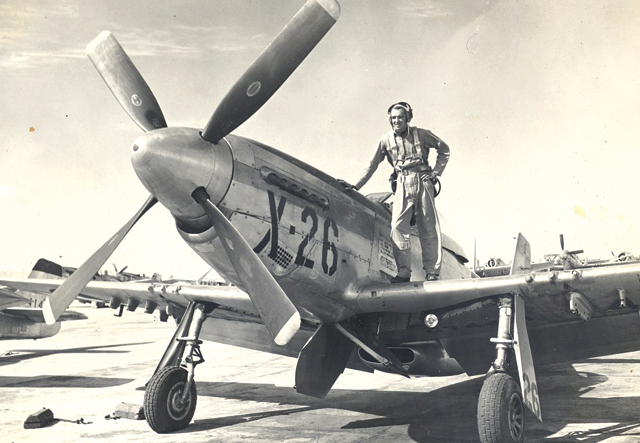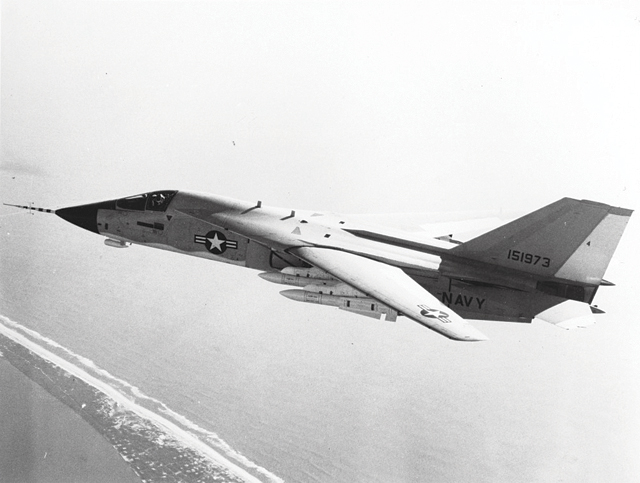Memorial would commemorate two Grumman pilots killed in ’67 crash


The prototype General Dynamics/Grumman F-111B fighter jet roared down the runway at Grumman’s base in Calverton on the afternoon of April 21, 1967. The interceptor jet, with its variable sleek wings, was the fourth in its line of test aircraft meant to serve as the United States’ next standard fighter jet.
In the cockpit was Charles “Buck” Wangeman, a 29-year-old Grumman test pilot. His copilot was Grumman’s chief test pilot, World War II veteran Ralph “Dixie” Donnell.
The test flight was more than another routine test. According to his son, Bruce, Mr. Donnell — then 46 years old — was set to hand off the lead test piloting on the F-111B project to Mr. Wangeman.
“He was passionate about what he did,” Bruce said. “I don’t think there’s any other way to describe it.”
According to a Naval Aviation Safety Center investigation, what happened next could easily have been prevented. Engineers had toyed with the experimental craft’s airflow system, which fed oxygen into the jet engines. Unbeknownst to the pilots, a switch that should have opened the airflow cowls had been mislabeled with scotch tape and advisory lights in the cockpit were switched off as the cowls closed, according to the accident report.
About eight seconds after the landing gear on the F111-B jet retracted, the cowls shut completely, choking off the engine. The afterburners blew out and the two-seater aircraft pitched up. The two Grumman pilots yanked the ejection handle that should have jettisoned them to safety. Instead, it snapped off, according to the accident report.
The fighter jet slammed down into the ground beyond the runway, bursting into flames. Mr. Donnell and Mr. Wangeman were both killed.
“It was pretty devastating for the company,” said Aldo Catsaros, a local aeronautics history buff who has spoken with many former Grumman employees about that day. “It was one of the most devastating events to happen in the history of Grumman.”
A memorial park for Grumman, once the area’s largest employer, was built near the site of the old airbase after the company closed in 1996. But nothing specifically mentioning Mr. Donnell and Mr. Wangeman was included.
Nearly 50 years after the accident, Mr. Catsaros and Tim Lent, a friend and former Grumman employee, are now moving forward with a plan to place a boulder at the memorial park with a plaque honoring the men.
“This is to celebrate their lives and what they’ve done for the country,” Mr. Catsaros said, emphasizing the pilots’ work in advancing aeronautics for Grumman.
It’s something Mr. Donnell’s children said they appreciate.
“I think it’s the greatest thing since sliced bread,” said Wayne Donnell, who was 20 years old when the accident occurred. “It’s wonderful, just wonderful.”

Mr. Catsaros said he’s considered pushing for a memorial for the test pilots for years but “never got around” to getting the proper approvals and building support. But the current idea for a bronze plaque has been gathering momentum, he said. He already has support from a Calverton-based company for a boulder for the site and is looking into fundraising to cover the $5,000 cost of the plaque.
Mr. Catsaros said Riverhead Town has also been supportive.
“There hasn’t been one hiccup with them at all,” he said.
The men who died in the crash represented both the old guard and the new blood at Grumman in the 1960s.
Mr. Wangeman was born in Pennsylvania and graduated from the U.S. Naval Academy in 1960, according to an obituary. He served with Fighter Squadron 154 at San Diego and did two tours of duty on the aircraft carrier USS Coral Sea.
His second tour included time in Vietnam, for which he was awarded the Distinguished Flying Cross after “extraordinary achievement” while attacking radar installations in North Vietnam in March 1965, according to the honor’s citation.
He resigned from the service in 1966 after reaching the rank of lieutenant and joined Grumman that year. Mr. Wangeman was survived by his wife, Patricia, and two sons.
Mr. Donnell, by contrast, was one of Grumman’s most established test pilots. He had been hired as an engineer after earning a degree from North Carolina State but enlisted after World War II broke out.
During the war, Mr. Donnell flew P-51 Mustangs against the Nazi Luftwaffe. While over enemy territory, Mr. Donnell shot down a German fighter plane, which exploded and tore a wing off his Mustang.
Mr. Donnell was captured and held at Stalag Luft III, the same German prisoner-of-war camp featured in the classic war film “The Great Escape,” which was inspired by a breakout at the camp.
Wayne Donnell said that was the only film he and his father ever saw together in theaters. “It was not pleasant business,” he said of his father’s time in the POW camp.
After surviving a “death march” just before the end of the war, Mr. Donnell was discharged as a sergeant and returned home. He immediately went back to work for Grumman as a test pilot.
“The old boy took it and he was off and running,” Wayne Donnell said.
Two years before the 1967 accident, Mr. Donnell — nicknamed “Dixie” because of his thick Southern accent — had flown in the inaugural F-111B test flight. He also was piloting the first flight of the Grumman OV-1 Mohawk.
“He lived a pretty fascinating life,” Wayne Donnell said. “He was a charming old fellow who never got old. It was too bad.”
Mr. Donnell said his father would sometimes take his “hotshot” planes and fly circles around the family’s home on Long Island to “let Mom know he’d be late for dinner.” On several occasions the Donnell children flew with their father.
Bruce Donnell never got that chance. He was just 3 1/2 years old at the time of the fatal accident. Though his mother ultimately remarried and Mr. Donnell found a new father figure, he said he always felt a connection to his father.
As a young man deciding on his career, Bruce Donnell discovered the same love of flying his father had.
“I had the passion as well, but I also struggled with some of the fears of what happened to him, so after I graduated I didn’t pursue it,” he said.
Years later, he looks back on his father’s work with pride.
“It’s been a void in my life but it’s inspiring to hear people still remembering him,” Bruce Donnell said. “That itself should explain the impact he had not just on the company, but on the people who were there.”
Top photo caption: Ralph ‘Dixie’ Donnell, then a captain in the Army Air Corps, poses on a P-51 Mustang while working as flight instructor at Luke Field in Phoenix, Ariz. Mr. Donnell would later serve as Grumman’s chief test pilot. (Credit: Donnell family, courtesy)




